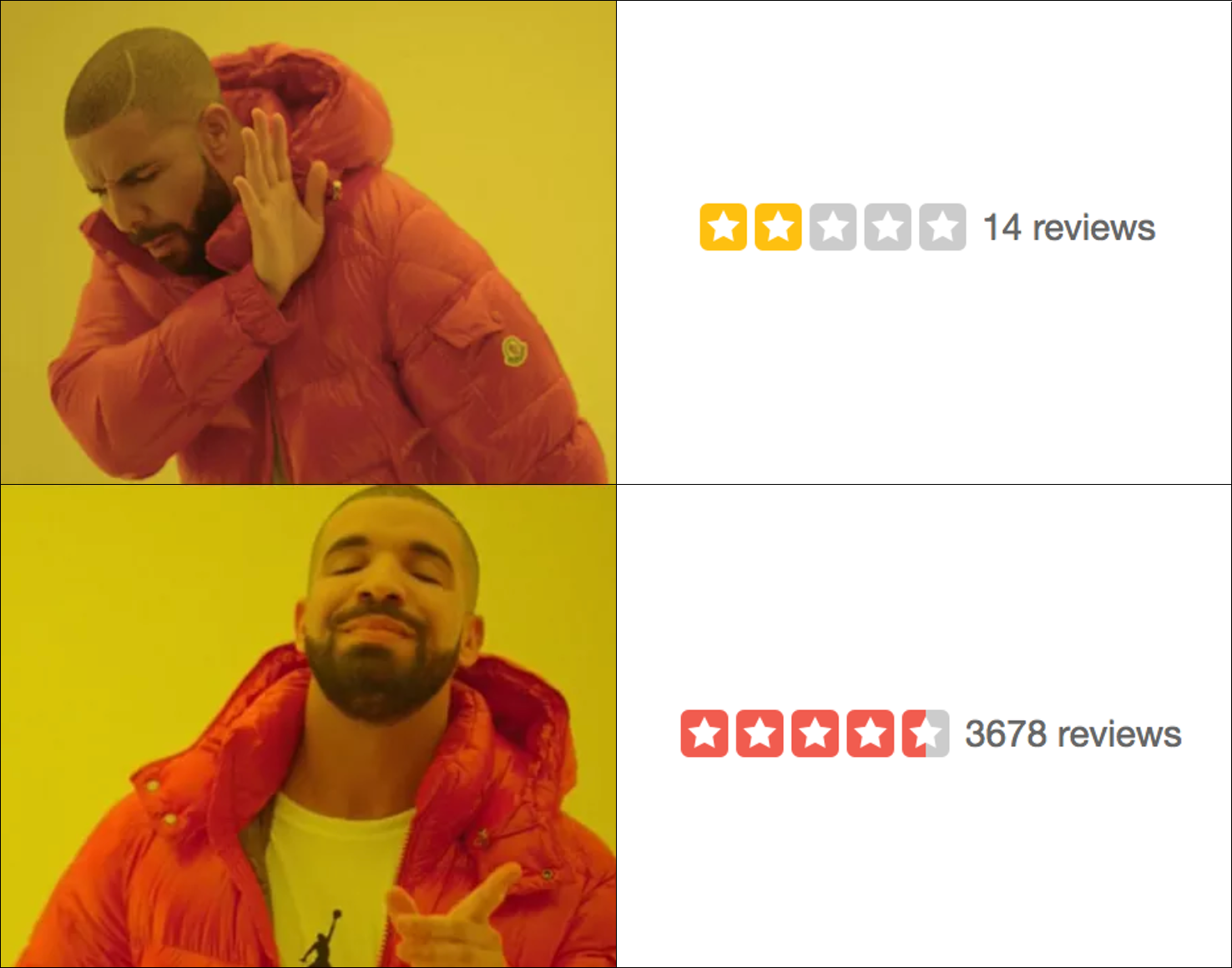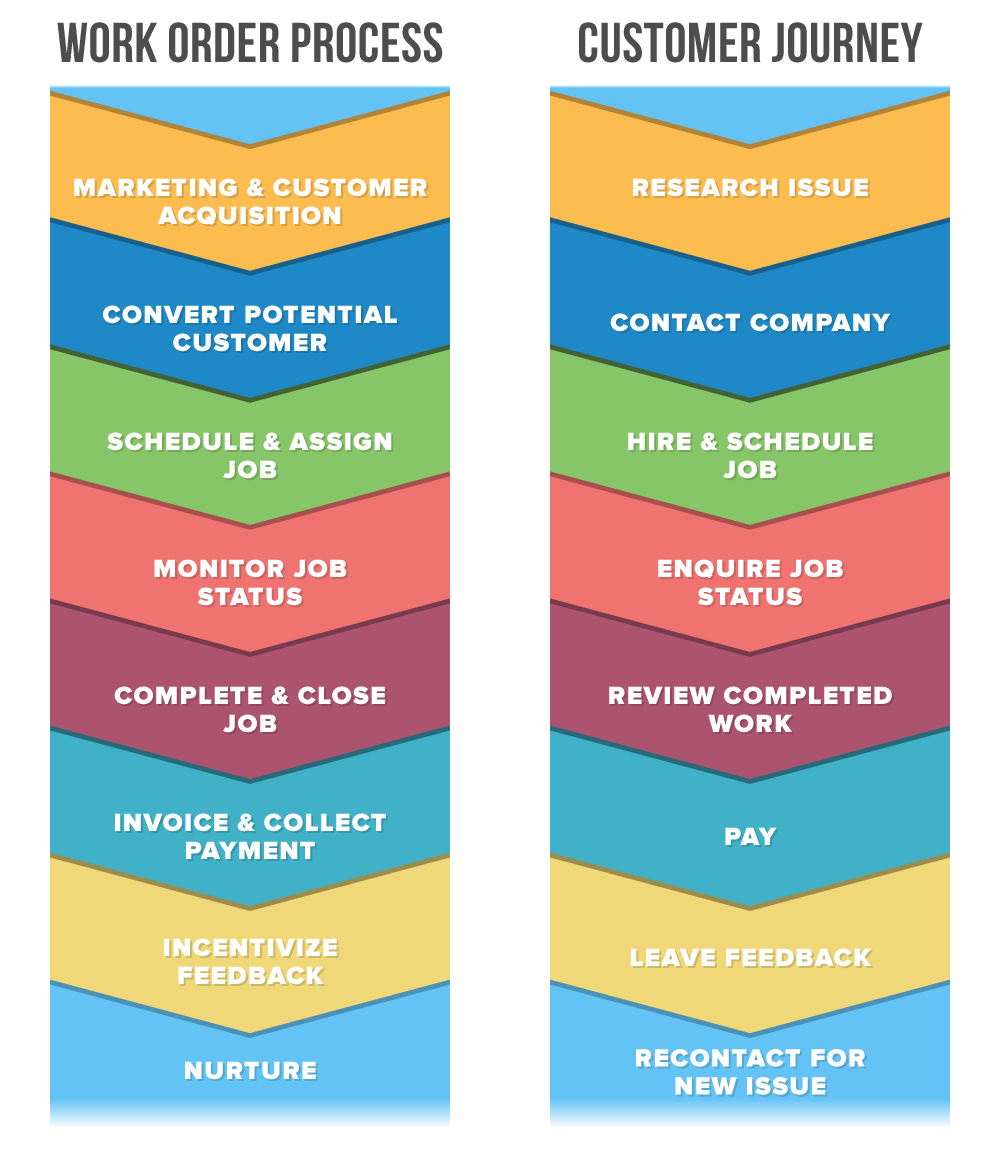Design Your Work Order Process To Optimize The Customer Journey
Advances in technology have ushered in monumental operational improvements from for field service businesses. GPS tracking, on-site payment processing and onboard sensors have all enabled new efficiencies for organizations.
But technology advances—like the Uber-fication of everything—have equally spiked customer expectations.
And with 74 percent of customers consulting online reviews before doing business with a service organization, just one mishandled experience can trickle down and cost you tons of new business. That’s why the most successful field service businesses are actively optimizing their work order processes and customer journeys.
This improves the operation, optimizes customer experiences and rockets your organization to sustained business success. Now, how do you get there?
Here’s what we’ll cover:
Define and Design an Optimized Customer Journey
Work Order Process Flowchart Mapped to Customer Journey
Adjusting Work Order Processes to Optimize Customer Experiences
Define and Design an Optimized Customer Journey
A work order process is the systematic way in which a new job and its tasks are moved through your various operational steps. It begins when a customer calls in with a job and ends once that job has been completed and paid for.
Your work order process is the blueprint for business success. But all too often, customers get left out of work order process designs, leading to poor customer experiences.
This can kill any chance for referral business and potentially plummet your reputation—good luck getting new customers with 2 stars on Yelp.

Field service businesses like yours need to understand where and how their work order process impacts customer experiences and overall journey. To achieve this mapping, you have to actively seek the voice of your customers:
Reach out to customers who have services scheduled and inquire how they found and what made them choose your company. This provides insight to where your customers’ journeys are beginning.
Send post-service surveys with questions about the experience at each stage of the journey. This could be a simple (and free) Google Form that provides structured, multiple choice answers that are easier to qualify and analyze. Offer 5 percent off the customer’s next service if they take the survey. This will simultaneously increase response rates and incentivize customers to return to your business.
Once you’ve got each step of the customer journey defined, you can move on to the crucial work of work order process optimization.
Keep in mind that your work order design should be flexible and adaptable to changes in customer preferences and business processes. As such, you should be looking for constant work order optimization. The best way to do this is by linking your work order process to your customer journey.
Work Order Process Flowchart Mapped to Customer Journey
When we say map your work order process flowchart to your customer journey, we mean that quite literally. Here’s an example of what this typically looks like for field service businesses.
Work Order Process Flowchart Mapped to Customer Journey

This flowchart we’ve created above features a standard work order process and typical customer journey. It likely maps directly to your operation and your most common customers. But all organizations are different, so don’t feel like if you’ve got additional steps you’re doing something wrong.
For example, many field service businesses provide and potential customers expect job pricing quotes.
Businesses that quote jobs regularly should include that in their work order process flowchart. It’d go somewhere between “convert potential customer” and “schedule and assign job.” That’s just one example of how this is meant to be a malleable process for articulating the unique needs of your business.
But regardless of any adjustments you make, this mapping accomplishes two main things:
First, it forces you to define your work order process. You have one regardless of whether you’ve thought about it or not, but this exercise forces you to put it on paper and examine it. This is a good thing.
Second, it shows you where each step in your work order process touches the customer journey. This will allow you to draw lines from common customer pain points to specific operational steps or employees. Likewise, this allows you to tie known operational short comings to the customer journey to proactively address potentially bad experiences.
Adjusting Work Order Processes To Optimize Customer Experiences
You should now have an idea of the relationship between your work order process and your customers’ experiences.
With this clarity, you can begin adjusting your work order processes, which means you can positively impact customer experiences. Better customer experiences will lead to repeat and referral business, which leads to more revenue.
Here are three examples of work order process tweaks for optimizing residential customer experiences. Keep in mind most residential service jobs are one-off requests to fix an existing problem. This is important because it means customers often need immediate help—and if you can’t offer them that immediacy, they’ll look to competitors:
1. Customer acquisition is the start of your customer’s journey. It’s the pre-work order stage of your work order process, and it needs to be included in your process flowchart.
Think of the customer during this time. Residential consumers seeking services are rarely if ever looking to work with a service company salesperson to learn about “special packages” and discounts. They want two things: a price range based on the job at hand and contact information.
OUR RECOMMENDATION: Improve the experience for potential customers by publishing estimated prices/rates for your various services on your website and sharing them on your social media accounts. Be sure to make it as easy as possible for potential customers to get in touch with you through whatever platform they prefer.
2. Your work order process must reassure customers that you’re sending a technician to address their problem as soon as possible, regardless of what needs to happen on your backend. And not only do customer expect technicians quickly, they expect them to arrive punctually.
In fact, our research shows that if a technician is over 30 minutes late, 36 percent of customers will never rehire your business again. On a positive note, the same research found that 72 percent of customers are more likely to re-hire a tardy business if they’ve received a simple notification from the business that their technician is running late.
OUR RECOMMENDATION: These stats about late technicians highlight the importance of operational transparency. Field service organizations should put GPS-enabled systems in place to obtain accurate reads on where their mobile employees are. Equipped with such technology, which is standard for most field service management software on the market today, organizations can mitigate the damage done to customer experiences by inevitable unforeseen circumstances.
3. Individual work orders are closed out after the job is done. However, the customer journey is a flat circle, and your work order process should accommodate this. The final step in your process must be placing customers in a nurture track for future service.
Lead nurturing is a common strategy for digital businesses in which a relationship is nurtured with potential customers through marketing communications. The goal is to remain engaged with these leads, stay on their radar, and eventual drive them to/be there when they decide to do business.
OUR RECOMMENDATION: Field service businesses must setup marketing framework to stay engaged with previous customers. Customer relationship management tools (CRM) are crucial for such a marketing endeavor. These systems store your valuable customer contact information and even automate mail campaigns at a cadence you set.
Many FSM systems on the market today offer basic CRM and other marketing capabilities, so start there and then determine if you need more advanced features. And in terms of marketing content, common seasonal services such as tree trimming, pest control prevention etc. are great ways to stay top of mind and be there when the customer needs another service.
Where to Go From Here
Your first step after reading this should be sitting down with your colleagues and mapping your work order process to your customer journey. If you’ve never collected any customer data/input before, look for online reviews about your business on Yelp, Google, or other services. These can provide context about your customer journey.
Once you get that mapped out, it’s time to put systems in place to make enhancements to your process. We mention field service management software multiple times. That’s where you should start—whether you don’t have a FSM system in place or your current system is outdated.
Finding the field service software that’s best for your business is quite the task. But that’s why we’re here. Software Advice has a team of expert field service software advisors ready to help you determine a shortlist of the best software for your business. This is in hand, you can go forth and choose the right system for your unique needs and take your business to the next level.